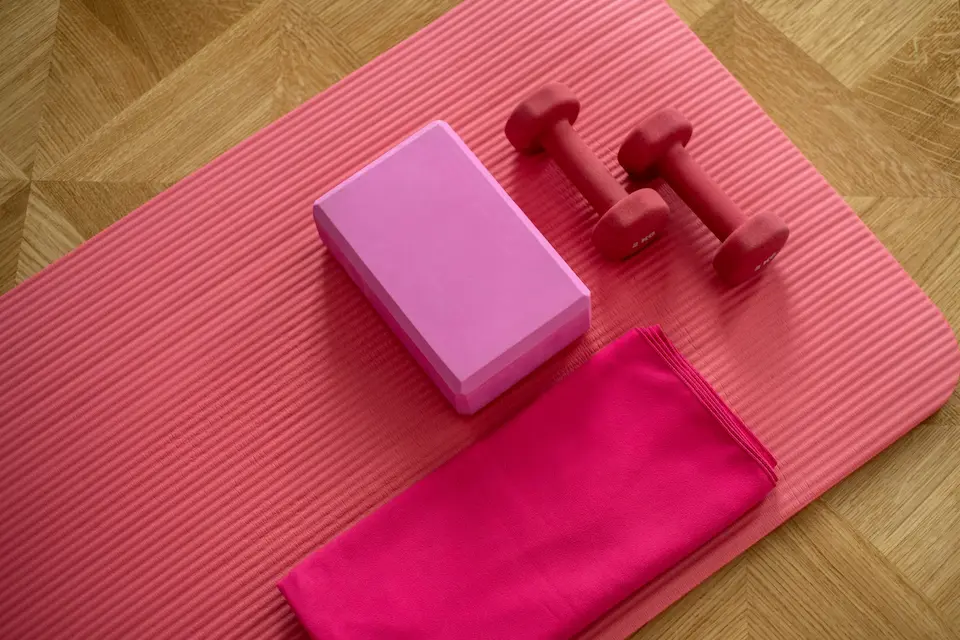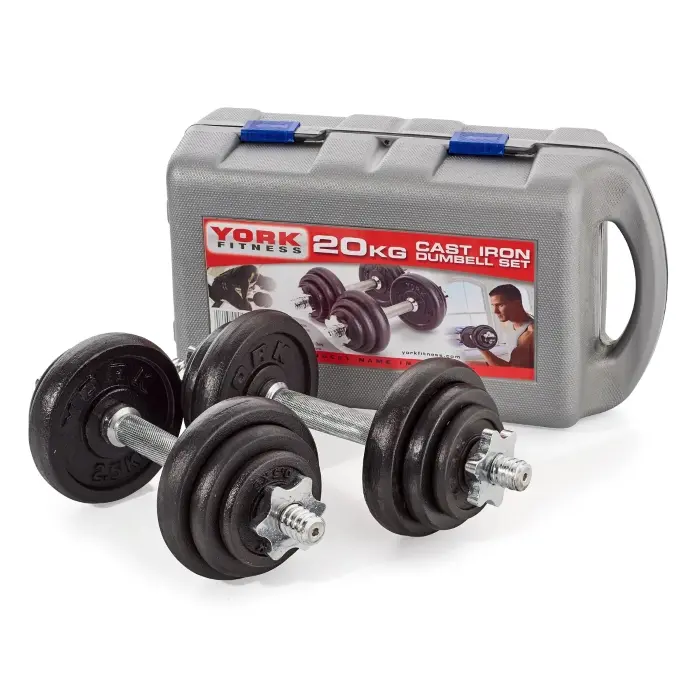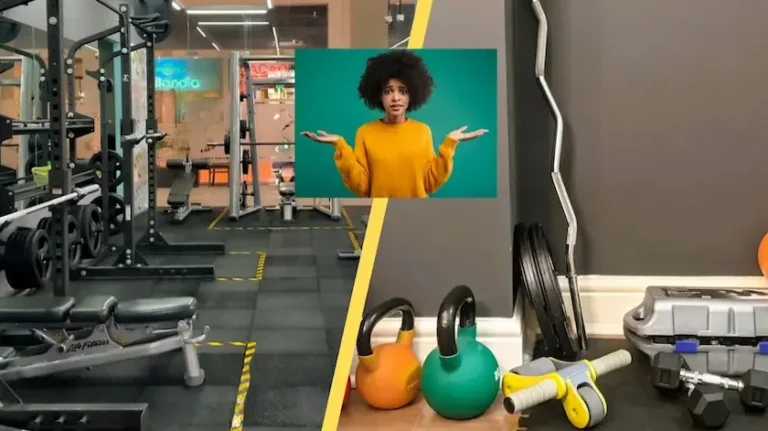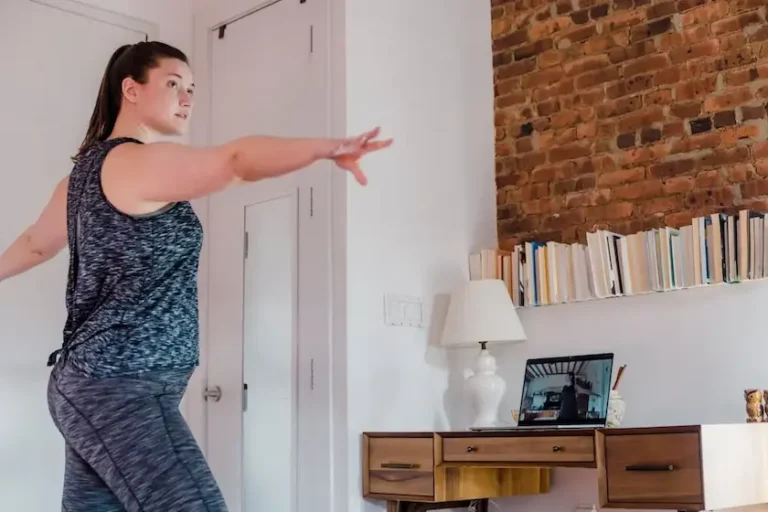How to Set Up a Micro Home Gym to Build Muscle and Shape your Body on a Budget
Some of the links on www.evxea.com may be affiliate links. I only recommend products and services that I believe add value to my audience. As an Amazon Associate I earn from qualifying purchases. Your support is greatly appreciated!
There is no standard definition of a home gym. Different people will give you different answers. For one person it is part of the living room. For another person, it’s a well-equipped garage gym, a basement gym, a room dedicated for the purpose, a shed, an outdoor space, and so on.
Having some equipment at home can be practical and for many people it is well worth the investment.
In this article we will offer some guidance on how to set up a micro home gym in a small space. For example, if you live in a flat, you have limited space and the primary use of your room is living space. So, here is our best advice.
How to set up a micro home gym
Evaluate your short and long-term goals
Your goals are an important factor to decide if the endeavor is viable at all. You can’t train in an apartment with minimal equipment to become a powerlifter, a professional bodybuilder or a CrossFit athlete. But you can definitely build muscle and become super fit exercising in your micro home gym.
Besides, there are many examples of calisthenic athletes who have built exceptional physiques with bodyweight training and no free weights at all.
Assess your available space
You should have enough space to exercise safely. If you don’t have a separate room to exercise, consider rearranging your furniture to make extra space.
Your height and overall size affect how much space you will need. If you are 2m tall, you will need much more space than a 1.50m tall person. You need enough space that allows you to extend your arms and legs in all directions, stand on a bench or jump, and some extra space to avoid bumping on furniture and getting injured.
You will also need space for any equipment you may have. For practical reasons, you’d rather keep your equipment in one place, for example along a wall, a corner of the room or a recess in a wall, and if possible close to the actual exercise space, especially if you plan to exercise regularly.
Some technical stuff to keep in mind. Residential and commercial use buildings are designed and built with different specifications. Also, depending on where you live in the world, the structure specifications are different. In the UK, most residential buildings have traditional wooden floors on the upper levels and are designed for small loads to reduce structure costs. In other parts of the world, residential buildings may be reinforced concrete structures and designed for larger loads, even by law sometimes.
If you live in the UK and you have a ground floor room, it is preferrable to set up your micro home gym there, as it is more likely it will be a reinforced concrete slab floor.
Besides, it would be a nightmare, if not impossible, to carry anything too heavy or bulky to the upper floors using a 60cm wide staircase (I’m afraid this is the usual in the UK).
The main idea when exercising at home is to use common sense. You are not building a commercial gym. In my case, I live in a first-floor flat, with a traditional wooden floor. My home gym equipment is mainly free weights and weighs 120 kg in total; and I don’t have any plans to add more. A large piece of furniture, a large washing machine, or a large size adult would be the same weight.
Protect your floor
If you are going to be training with weights, use a thick rug or interlocking exercise mat tiles to protect the floor surface and also for shock absorption and sound insulation. Either way, using an anti-slip rug liner under the mat will keep it in place when you exercise.
Adapt how you perform your exercises. If you want to do deadlifts at home, do a continuous motion type of deadlift, where the weights don’t touch the floor at all at the bottom position. Some people have the guilty pleasure of banging the weights on the gym floor, but this is a home micro gym and not a commercial gym.
Subscribe to the newsletter
Receive updates about new articles, free resources and service offerings.
Basic equipment to consider for your micro home gym
If you are new to working out at home, you have no clue if you will stick to the plan. The best approach is to invest in equipment gradually while giving careful thought to future needs. You don’t have to purchase everything all at once. And the good thing is that you keep your equipment forever.
These are the most basic, versatile and affordable solutions:
1. An adjustable dumbbell set with 1 inch bars
This is the most basic even if you do home workouts occasionally. The York Adjustable Dumbbell set will work for both women and men, because the dumbbells are not very bulky.
If after a couple of months you have decided that you are enjoying home workouts, you can consider adding more to your kit. Here are some additions to consider:
2. Standard 1 inch diameter barbell
You can find a standard 1 inch barbell with a minimum length of about 1.20m, which weighs about 5 kg. You can find longer barbells, but this length is more convenient for small spaces. Make sure the barbell comes with secure clamps or purchase a set of secure clamps.
Of course, it is down to you if you want to invest in a 1 inch diameter barbell or one with the standard Olympic barbell diameter. In the latter case you will have to purchase Olympic weight plates. Just make sure that your plates and barbell match.
A straight barbell will work better for hip thrust exercises, while an E-Z barbell is easier on the wrists for arms exercises and for exercises where you place the barbell behind the head, along your trapezoids.
3. Extra weight plates
If you purchased a dumbbell set, like the one mentioned above, you already have 17kg of plates that came with the dumbbell set. If you want to do barbell exercise, think in advance about which exercises you plan to be doing, and purchase a few extra plates if needed. Although vinyl-covered weight plates, or plates with grip holes, are easier to handle, they can be bulkier. This has advantages and disadvantages depending on the exercises you do. For exercises where you lift the barbell above or behind the head, more compact plates will work better.
Your equipment has to be practical. You can combine the York Adjustable Dumbbell set with a standard 1 inch diameter barbell. There are prettier adjustable dumbbells at the shops, like the Dripex Steel Adjustable Dumbbell Set, but they are also more expensive, and this is what you get, an adjustable dumbbell set. If you want to add barbell exercises to your routine, you could end up buying more weight plates and you can’t hoard a ton of weights in your room.
Decide what suits your budget and needs better and keep your equipment as minimal as possible.
4. Kettlebells
You can have a full-body workout using only kettlebells. Kettlebell workouts are great for strength and power training and they burn many calories. You can start with a few kettlebells, and you don’t need to buy them in pairs. For beginners though, dumbbells will work best.
5. Suspension trainer (e.g. TRX)
Suspension training is a workout type of its own. With a suspension trainer you can work the whole body, and it is great to build strength and muscle. There is a large variety of exercises to choose from and many of them will also work the cardiovascular system. It doesn’t take much space; it is lightweight and you can do your workout at home, outdoors or anywhere that you can anchor the TRX. Just make sure that you have enough space and anchor the TRX securely.
6. Adjustable ankle weights
Especially for the ladies who love working their legs and glutes. Ankle weights can add variety to your workouts.
If you like to train heavy, go for adjustable ankle weights with steel rods, because you can find them in 2x5kg pairs with approximately 0.5kg steel rods. You can imagine how versatile these are, as you can adjust the weight from around 0.65kg to 5kg each. Additionally, you can wear them on your hands.
You can find all the products that I recommend at the evxea shop.
Training accessories to consider
7. A mini exercise step: it can be used for leg exercises, as a mini bench or for step aerobics.
8. An adjustable bench: If you can afford it and you have enough space. An alternative would be the Reebok Deck. Not as high and comfortable as a padded bench but lighter and practical.
9. Yoga blocks: an amazing training accessory, even if you don’t do yoga. Sometimes you just want to adjust the position of your body or increase the range of motion of an exercise. Some examples are barbell hip thrusts, Bulgarian split squats, reverse lunges and many other exercises.
10. Exercise Ball: A stability ball is a very affordable accessory to have and you can do exercises for any body part. It adds some variety to your workouts.
11. Rubber bands: They are cheap, but not the ideal to build strength and muscle and they give a strange feel to the joints. They have their use, but I don’t consider them an indispensable part of a kit. Of course, you are the one to decide if you like them or not and you know better what style of workouts you prefer.
Be ready to improvise
Having to workout with minimal equipment and weight means that you will have to improvise and use techniques that you would not normally use at the gym. This can have an enormously positive effect on your overall fitness.
For example, at home, you will often use advanced techniques like supersets, tri sets, compound sets, circuits, HIIT, Tabata, calisthenics, etc. Normally, most people would never use these techniques at the gym.
Firstly, at the gym you have all the equipment you need to do a standard strength and muscle building workout. Also, it is impractical, because at the gym, we share the equipment with the other members on a busy gym floor. And many people would just feel uncomfortable doing an “exotic” workout in a busy gym, so they prefer to stick to a standard workout.
The result of using advanced techniques, different exercises and other improvisation methods at home, is that you will end up being better conditioned and more fit, than if you were doing your standard gym workouts.
Train safe
Before you start your workout, remove any obstacles from your exercise space. If needed, push the furniture to make space or permanently change the furniture layout. Make it a habit to keep any weights out of the way between sets. It is very easy to stumble upon the weights and injure yourself when you decide to go to the kitchen to refill your water bottle. If you exercise barefoot, you don’t want to step on anything like a barbell clamp (ouch!) or hit your little toe. I don’t say that exercising barefoot is incorrect, just be cautious.
Besides, wearing shoes can help, depending on the exercise. If you do squat jumps, shoes will protect your feet. If you do dynamic lunges, they will prevent slipping. When you do calf exercises, shoes will restrict your range of motion. You will figure out what works best for you.
In general, it is a good idea for hygiene reasons to have a separate pair of trainers that you use only at home. It can be an old pair, put it in the washing machine and then use it only for home workouts.
Be consistent
Exercising at home saves you a lot of time. Don’t make any excuses to skip workouts. Design a routine based on your overall fitness goals and stick to it. If you can’t design a fitness plan yourself, hire a professional to help you.
Doing 3-4 focused, hard workouts per week is enough to build muscle and become super fit. You don’t have to overdo it to get results. Be consistent with both your training and your diet plan.
Follow a healthy diet plan
To build muscle and change your body composition, along with your hard workouts, you also have to follow a balanced diet, rich in proteins and carbs and moderate in fats. Results will come as a combination of both. There are some lucky people with great genetics out there who can get away with doing some maintenance work, but for most people, this is not the case.
What about cardio?
Cardiovascular exercise is essential for a healthy heart, overall health and longevity and it can also help you lose body fat. If you don’t have space for a cardio machine or can’t afford it, you can embed your cardio into your regular home workout and do circuit training, Tabata, or HIIT. This is the most common with people who workout at home. You can also go for a jog around the block, speed walk, power walk, jump rope, or do Fartlek training.
Can you build muscle at your micro home gym?
To build muscle and sculpt your body at home, you have to do resistance training, whether it be bodyweight, weights or suspension training. You also have to increase the intensity of your workouts progressively. If you are getting stronger, it is a positive sign that you are also building muscle. Everyone will experience an increase in strength and overall fitness during the first couple of months of their fitness plan. The point is to continue improving after the first couple of months.
Your workouts have to be challenging. The last few repetitions of your sets have to be difficult.
You can definitely achieve that at home, but if you don’t have the experience to design a fitness plan, it is a good idea to ask for guidance from an expert. This is what I do at evxea. I help women like you get strong and fit by designing workout and diet plans based on your goals and needs.
You can find all the products that I recommend at the evxea shop.
Conclusion
Home workouts have advantages and disadvantages, they aren’t for everyone. It takes some time to find your style of workout, to get used to it and you have to be ready to improvise and make changes.
If you are reading this article, you are already considering the possibility of exercising at home and I hope this article has helped you to make a decision.









